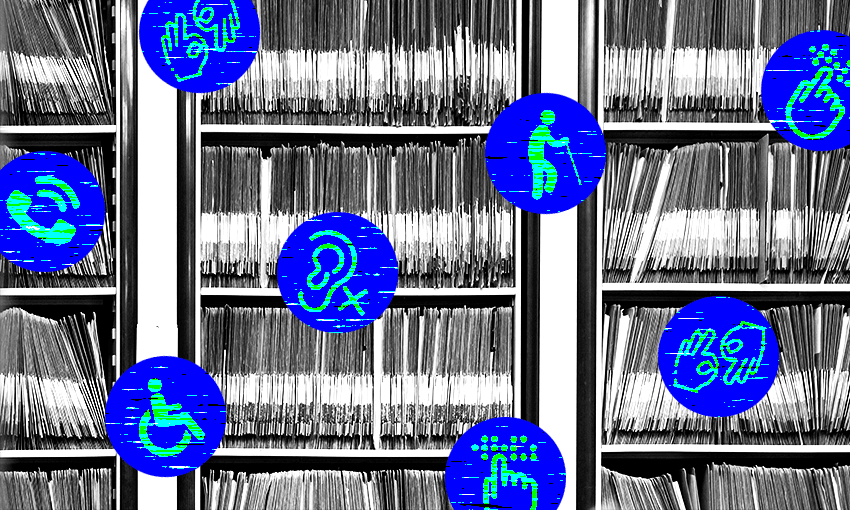Better data could be key to promoting better health for disabled people, writes Dr Esther Woodbury of the Human Rights Commission.
Much of my working life has focused on disability and health: studying, researching, advocating and monitoring. But I initially learnt about health systems from the inside out.
I spent years travelling through hospital corridors with a small library of medical records, the stacks of folders often requiring their own transport. Those records told stories of long stays in hospital as a child with a chronic illness, multiple surgeries as a young disabled person and adult, and admissions for life-threatening infections as an immune suppressed adult.
Like many of my disabled and immune compromised peers, I spent most of 2022 isolating from the omicron outbreak. With removal of Covid restrictions once again in the news, emerging health data and the development of health strategies beginning, it is worth asking the question: will better data lead to better health for disabled people?
Last month Manatū Hauora Ministry of Health and Whaikaha Ministry of Disabled People released Covid-19 data for 2022, which suggested that disabled people living in residential care were 8 times more likely to end up in hospital than non-disabled people, and 47 times more likely to die than non-disabled people. Sixteen disabled people in residential care died during the omicron outbreak.
The study drew from the 43,000 people who received funded disability support services and were under 70 years in the period January 1 to November 16, 2022.
This data appears to confirm what we believed about Covid mitigations and restrictions: The elimination strategy, border closures, the work of many disabled people, whānau, disability and medical staff had largely kept us safe from the massive threat from the first two years of Covid.
By 2022 disabled people’s high rates of vaccination, combined with self-isolation, meant this high-risk group were slightly less likely to get Covid-19 than non-disabled people. However, despite overall lower infection, they were still seven times more likely to die (11 deaths) and 3.5 times more likely to go to hospital.
It is important to note that in general terms disabled people who receive funded services are already 19 times more likely than non-disabled people to die (for non Covid-19 reasons), due both to complex health conditions and additional risks, such as living in residential services.
Complex health conditions do not exist in a vacuum.
November 2022 data released by Manatū Hauora showed that despite some small improvements, the gap between disabled and non-disabled people’s self-rated health was almost 30%. Sixty-three percent of disabled people felt in good health compared to 90% of non-disabled people. Disabled people were seven times more likely not collect to prescriptions because of cost.
Unsurprisingly, in 2021 rates of mental distress increased for everyone, but the increase for disabled people underscored an already grim gap. Non-disabled people saw a one percent increase in feeling high distress to 9%. Among disabled people, distress increased 6% from an already high 27% to almost 33%.
Being disabled is distressing. Fighting for eligibility; availability of support; getting help during crises; lack of accessibility in the community; isolation and poverty – all combine to generate huge distress.
It is positive that we now have three years of Manatū Hauora data. Although, there is no specific data for tāngata whaikaha Māori or disabled Pacific peoples.
The gap between good and poor health for these groups is almost certainly greater, given higher rates of disability, and intersecting effects of ableism and racism. Recognition of disabled people as a priority group in Te Pae Tata, the Interim Health Strategy, has been an important achievement.
Now what we need is data on the health of tāngata whaikaha Māori and disabled Pacific peoples – and to see Manatū Hauora moving from recognition to action.
There have been huge changes and improvements since my early experiences of the health system, but we still need disability expertise among clinical, policy and funding staff to see changes to disability health data.
We also need to see disabled people moving from institutions to living in the community with an adequate standard of living. In the time of a (still) deadly pandemic, disabled people, first and foremost, have the right to live and to live well.
Dr Esther Woodbury is lead disability rights advisor at Te Kāhui Tika Tangata | Human Rights Commission.
